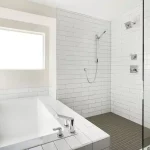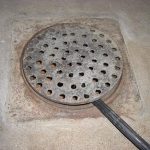Pachyphytum Blue Haze, also known as Blue Pearl, is a beautiful small succulent. Its tiny leaves make the plant very attractive. The average height of this plant is about 6-8 inches, and the leaves of this plant are blue and green.
This succulent is native to Mexico. Many people like to grow this plant in their homes; however, some fail to look after it as it requires attention. If you’re planning on growing this plant in your house, you must look into some requirements for growing a Pachyphytum Blue Haze in your house.

Pachyphytum ‘Blue Haze’ Care
Sunlight
Pachyphytum Blue Haze has a certain kind of sunlight requirement because of its delicate leaves. Blue pearl prefers scattered indirect light. Indirect light is the one that passes through a window or a curtain. Direct sunlight can harm your cute little succulent. It can burn down the leaves and eventually kill your plant. If you’re planning on growing this plant in your garden instead of keeping it inside, you must arrange a semi-shaded spot where it’s safe from direct sunlight. Sometimes, plant owners think that as their plant isn’t a friend of direct sunlight, they forget even to give their plant some light. What happens is that the plant starts to dry up by shrinking its roots and leaves. In the end, it gives up and dies. Hence it is quite important to check your Blue pearl’s sunlight requirement.
Soil
Like all succulents, Pachyphytum Blue Haze requires well-draining soil. Well-draining is a term not everyone knows. Your soil needs to have good drainage so that it eliminates all the excess water present on its surface. If it isn’t able to drain that excess water, then your Blue pearl might face many issues. The biggest issue is that excess water can cause root rot. The best soil you can give your succulent is soil mixed with sand and perlite. Both of these components can turn out great for your Blue pearl.
Water
Unlike most succulents, The Blue pearl doesn’t need a lot of water. The watering process mainly depends on the environment in which you’re growing your plant. If you’re planning to grow this succulent in a dry area, it would be best to water your plant daily. However, you must be aware of the serious repercussions of over-watering. On the other hand, watering the plant daily won’t be advisable if you’re growing your Pachyphytum Blue Haze in a humid and cold area. The best way to keep track of your plant’s water cycle is by monitoring it. You can make a table in which you record your plant’s watering days. By this, you’ll be able to keep your Blue pearl healthy.
Temperature and Humidity
Although there isn’t a specific temperature range for growing Blue pearl, you should follow the requirements. The temperature range in which this plant thrives is between 18-35 degree centigrade. You must be mindful of the precautions if you’re growing this succulent in extremely cold or hot regions. In cold areas, you must keep the plant indoors to avoid frostbite. While in hot regions, you must protect your plant from bright sunlight. Humidity also isn’t a big factor that affects your succulent. Blue pearl likes moderate humidity levels; hence you must plant it somewhere with moderate humidity.
Fertilizer
Like all succulents, Pachyphytum Blue Haze doesn’t need fertilizer; however, giving your plant a special gift in fertilizer might improve the growing process. The best kind of fertilizer for this plant is a slow-release fertilizer. The best period during which you can give fertilizer to your plant is from spring and summer when the plant isn’t dormant. Fertilizers in high concentrations might kill your plant, so you should check the saturation level of the fertilizer before giving it to your plant.

Pachyphytum ‘Blue Haze’ Propagation
The best way to propagate your plant is through stem cuttings. During spring, you should take a whole leaf plant and cut it with a knife. Afterward, you’ll have to plant that stem into a new container filled with soil. Soon you’ll witness small roots coming out of that stem. Finally, you’ll have a new Pachyphytum Blue Haze at your home.
Pests and Diseases
Common pests like spider mites and aphids attack Blue pearl. These pests don’t cause much trouble and can be easily removed through a water sprayer or medicine.
Two of the biggest diseases your Pachyphytum Blue Haze is vulnerable to are black rot and root rot. Both of them are a result of excess watering and bright sunlight. One must keep the plant safe from sunlight by keeping the succulent in a shady area and monitoring the plant’s watering cycle to avoid over-watering.
This is how one can grow a Pachyphytum Blue Haze in their home. The information provided above is enough for you to grow this succulent at your home. I hope you find this information useful.



